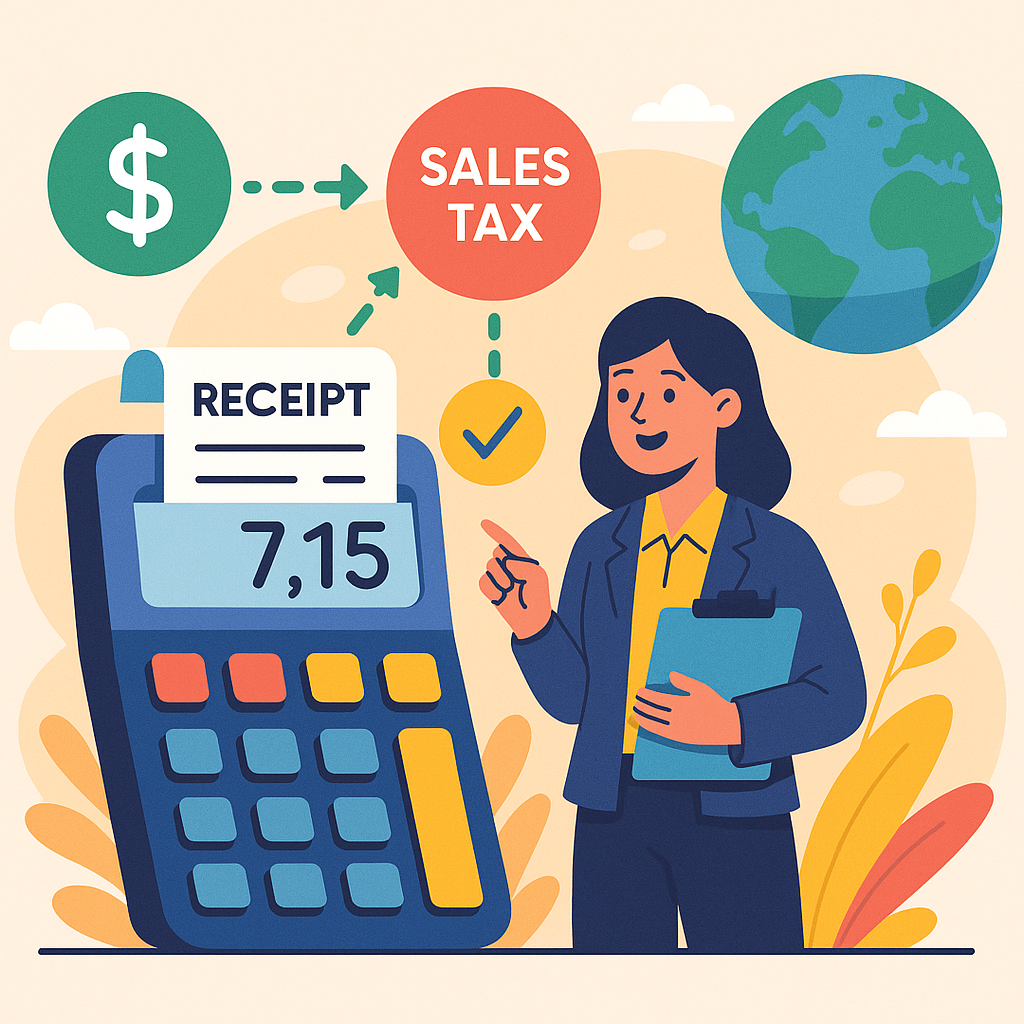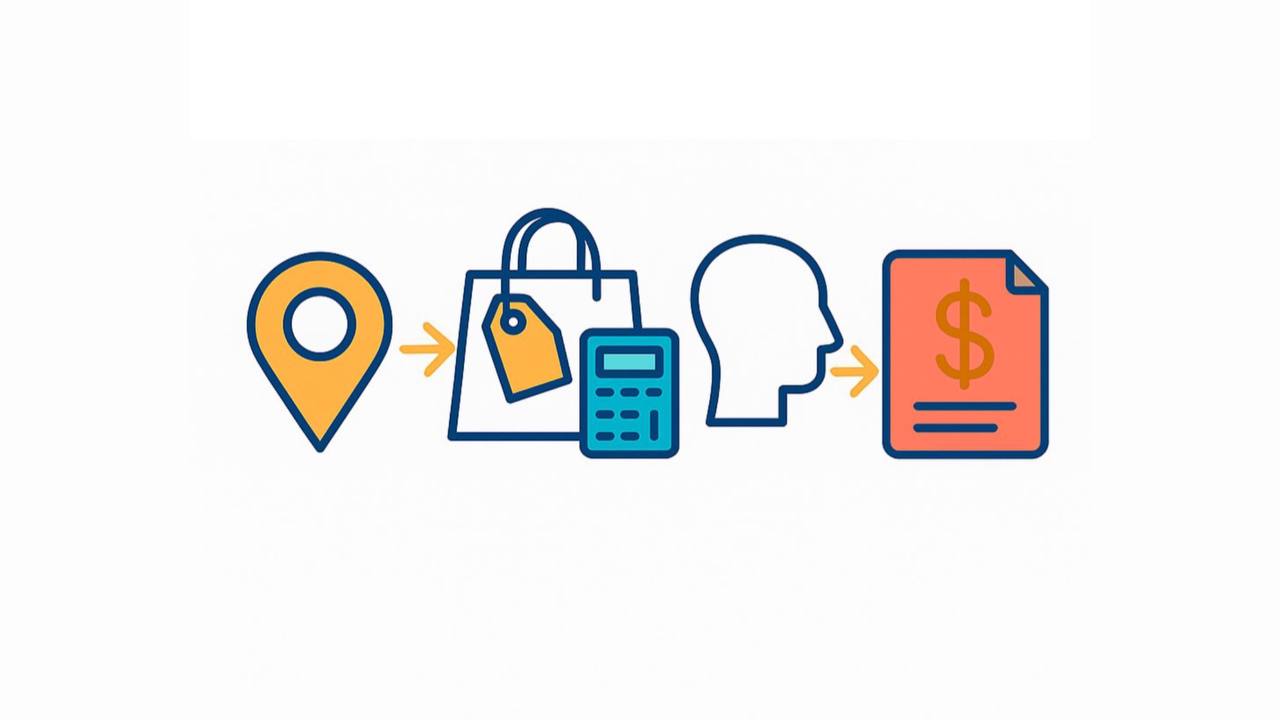Sales tax can be tricky. It’s easy to assume it’s a straightforward percentage of the selling price, but for businesses operating across regions, the rules can become complex quickly. Whether you’re based in the U.S., Europe, Canada, Australia, or Asia, understanding how sales tax is calculated is vital to your operations. This guide breaks down the key elements you need to know and shows how IST can help you navigate the intricacies of sales tax calculations seamlessly.
What Is Sales Tax?
Sales tax is a percentage of the sale price of goods or services that businesses are required to collect and remit to the government. However, its application can vary greatly depending on the location, type of product or service, and other variables. While the concept may seem simple, when you are operating on a larger scale or in different regions, sales tax calculations become much more nuanced.
Key Factors That Affect How Sales Tax Is Calculated
1. Jurisdiction Rules
Sales tax is not uniform. Each state, country, province, or city can set its own rules for sales tax. For instance, in the United States, some states have no sales tax, while others charge up to 10%. In many regions, municipalities or even counties can impose additional sales tax. For example, a business located in Chicago will need to apply city sales tax on top of the state rate. Understanding these rules is essential for calculating sales tax correctly in any given jurisdiction.
2. Product or Service Type
The category of the product or service being sold can significantly influence how sales tax is calculated. For instance, essential goods like groceries or medicine may be exempt from sales tax in some jurisdictions, while luxury items such as jewelry or electronics often attract higher tax rates. It’s crucial for businesses to understand how different products and services are categorized to avoid misclassification and ensure compliance.
3. Customer Location
For businesses involved in eCommerce or international sales, the customer’s location often determines the sales tax rate. In many cases, businesses are required to apply the sales tax rate based on where the customer is located, rather than where the business is based. For example, a business in Texas selling to a customer in California may need to apply California’s sales tax rate, not Texas’s. This is known as “nexus” and is a key factor in determining where tax obligations exist.
4. Nexus and Sales Thresholds
Many jurisdictions require businesses to register for sales tax when they exceed a certain sales threshold in that jurisdiction. For example, once a business’s sales in a state surpass $100,000, it may be required to collect and remit sales tax for that state. This rule is particularly important for eCommerce sellers who may sell to customers across the country or internationally.

Manual Calculation vs. Automated Solutions
In the past, businesses had to calculate sales tax manually by looking up rates and applying them to every transaction. However, this approach is time-consuming and prone to errors, especially when dealing with multiple jurisdictions. With automation tools like IST, businesses can streamline the process. IST’s system automatically applies the correct tax rate based on location and product type, reducing the risk of mistakes and saving valuable time.
Common Challenges in Sales Tax Calculation
1. Constant Rate Changes
Sales tax rates can change frequently, especially in states and countries with complex tax codes. Keeping up with these changes manually can lead to errors, such as underpaying tax. Automated solutions, like those offered by IST, can stay up-to-date with the latest changes and apply the correct rate instantly.
2. Cross-Border Sales
When selling internationally, businesses face even more complexity. Different regions like the U.S., the European Union, and Australia have their own tax systems, VAT in Europe, GST in Australia, and sales tax in the U.S. Each system has its own rules and rates, which can lead to confusion when handling cross-border sales.
3. Sales Tax Exemptions
Certain products and services may be exempt from sales tax, or customers might qualify for tax-exempt status. Misclassifying items or failing to keep up with exemption documentation can result in audits and penalties. Automated tools help businesses ensure they’re properly applying exemptions.
Scaling Tax Compliance Globally
As businesses expand internationally, manual methods of sales tax calculation quickly become unfeasible. Operating across multiple countries or states requires keeping track of various tax systems and understanding the nuances of each one. This is where IST’s automated solution shines, providing businesses with the tools they need to maintain tax compliance across borders without the hassle.
Navigating Sales Tax with Confidence
Sales tax doesn’t need to be a headache. With the right knowledge and tools, businesses can ensure they’re calculating sales tax accurately, avoiding costly mistakes, and staying compliant. IST makes it easy for businesses to calculate tax correctly, no matter where they’re operating. Whether you’re selling locally or internationally, IST ensures your business remains tax-compliant.
Final Words
Ready to streamline your tax compliance process? Discover how IST’s automated tax calculation solutions can help you manage sales tax across jurisdictions, freeing up time and reducing risk. Get started with IST today!

Leave a Reply